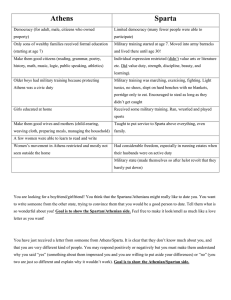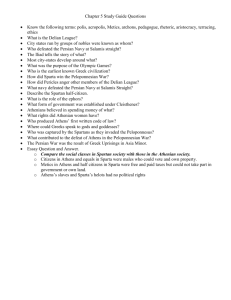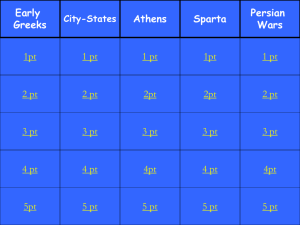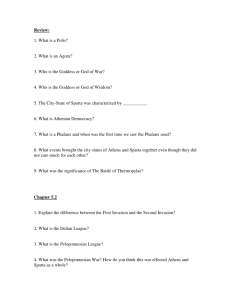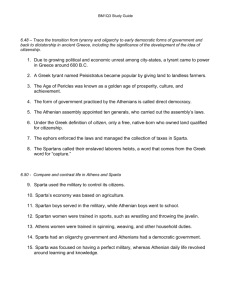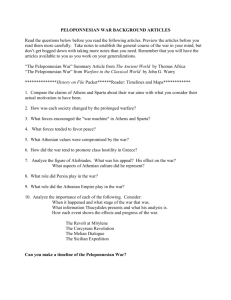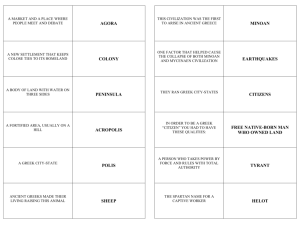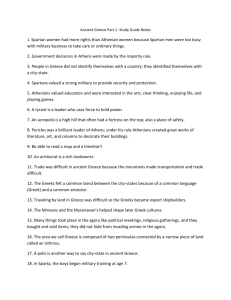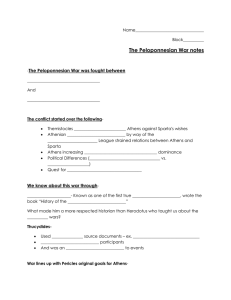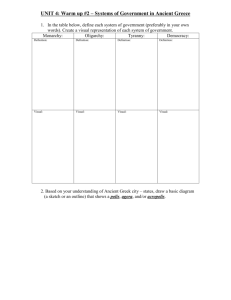The Peloponnesian War Blue
advertisement
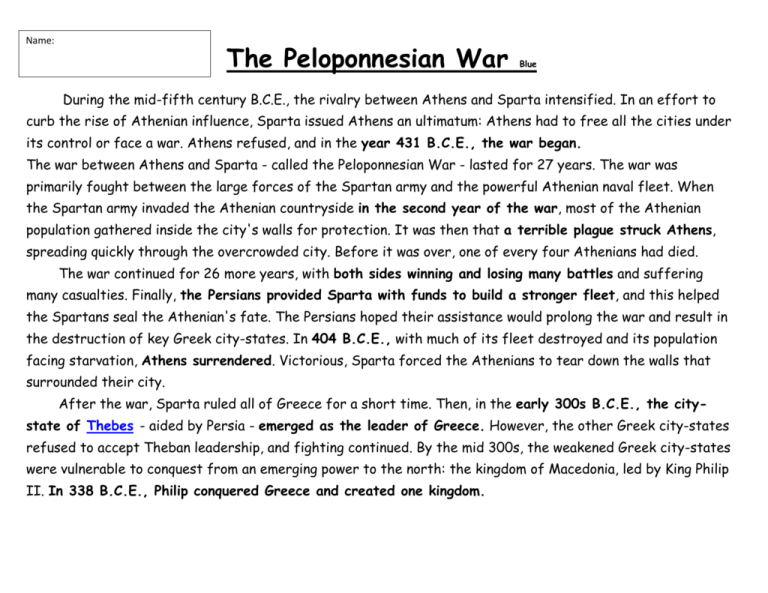
Name: The Peloponnesian War Blue During the mid-fifth century B.C.E., the rivalry between Athens and Sparta intensified. In an effort to curb the rise of Athenian influence, Sparta issued Athens an ultimatum: Athens had to free all the cities under its control or face a war. Athens refused, and in the year 431 B.C.E., the war began. The war between Athens and Sparta - called the Peloponnesian War - lasted for 27 years. The war was primarily fought between the large forces of the Spartan army and the powerful Athenian naval fleet. When the Spartan army invaded the Athenian countryside in the second year of the war, most of the Athenian population gathered inside the city's walls for protection. It was then that a terrible plague struck Athens, spreading quickly through the overcrowded city. Before it was over, one of every four Athenians had died. The war continued for 26 more years, with both sides winning and losing many battles and suffering many casualties. Finally, the Persians provided Sparta with funds to build a stronger fleet, and this helped the Spartans seal the Athenian's fate. The Persians hoped their assistance would prolong the war and result in the destruction of key Greek city-states. In 404 B.C.E., with much of its fleet destroyed and its population facing starvation, Athens surrendered. Victorious, Sparta forced the Athenians to tear down the walls that surrounded their city. After the war, Sparta ruled all of Greece for a short time. Then, in the early 300s B.C.E., the citystate of Thebes - aided by Persia - emerged as the leader of Greece. However, the other Greek city-states refused to accept Theban leadership, and fighting continued. By the mid 300s, the weakened Greek city-states were vulnerable to conquest from an emerging power to the north: the kingdom of Macedonia, led by King Philip II. In 338 B.C.E., Philip conquered Greece and created one kingdom. Directions: Use the information from the text to create a timeline of the Peloponnesian War. Include dates when provided, mark major events without dates. Illustrate at least 4 events. Your timeline should include at least 8 events. Use the top and bottom of the timeline to conserve space. Remember to show chronological order. Be neat!
